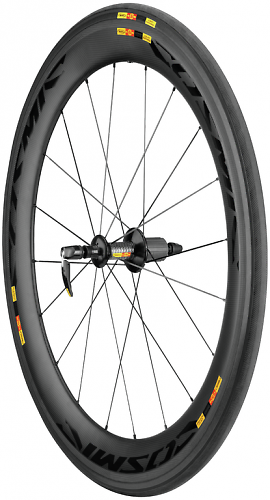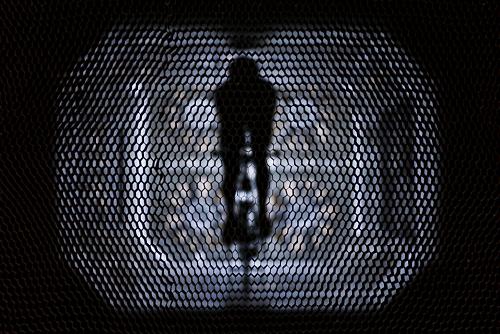- News
- Reviews
- Bikes
- Components
- Bar tape & grips
- Bottom brackets
- Brake & gear cables
- Brake & STI levers
- Brake pads & spares
- Brakes
- Cassettes & freewheels
- Chains
- Chainsets & chainrings
- Derailleurs - front
- Derailleurs - rear
- Forks
- Gear levers & shifters
- Groupsets
- Handlebars & extensions
- Headsets
- Hubs
- Inner tubes
- Pedals
- Quick releases & skewers
- Saddles
- Seatposts
- Stems
- Wheels
- Tyres
- Tubeless valves
- Accessories
- Accessories - misc
- Computer mounts
- Bags
- Bar ends
- Bike bags & cases
- Bottle cages
- Bottles
- Cameras
- Car racks
- Child seats
- Computers
- Glasses
- GPS units
- Helmets
- Lights - front
- Lights - rear
- Lights - sets
- Locks
- Mirrors
- Mudguards
- Racks
- Pumps & CO2 inflators
- Puncture kits
- Reflectives
- Smart watches
- Stands and racks
- Trailers
- Clothing
- Health, fitness and nutrition
- Tools and workshop
- Miscellaneous
- Buyers Guides
- Features
- Forum
- Recommends
- Podcast
TECH NEWS
Mavic launch new CXR60 wheels with aero blades
Mavic have today launched the new CXR 60 wheelset, which follows the release of the Cosmic Carbone 40 clincher wheels back in March and the CXR 80s last year, upon which these new wheels are based. The aero wheel market is really hotting up at the moment and Mavic are keen to push their expertise into world beating wheels to rival the stiff competition from the likes Zipp, Enve and Reynolds.

The new CXR 60 follows the development of the deeper section CXR80, which launched at Eurobike last September. The key feature of those wheels was the use of novel plastic blades that smooth the transition between the tyre and rim, and give the wheel and rim combination a NACA airfoil profile, with optimally shaped tyres. The UCI swiftly made clear that these were against their rules.

This doesn’t seem to have fazed Mavic though, which might seem odd. When we questioned Mavic the reasoning becomes clear. They told us, “[We] believe strongly in our CX01 technology, we show again that this is an important step in terms of aerodynamics and we will keep on working on it to improve the system whatever the rule is (as far as there is no risk for the cyclist).”
So the new CXR 60 wheelset is a 60mm version of the CXR80. It uses the same detachable CX01 blade, a thin strip of plastic. With this blade, Mavic claim their wind-tunnel testing has shown the wheel to be faster than the Zipp 404, a common benchmark wheel, at certain yaw angles. Mavic tested the new wheels at the CMEFE hepia wind tunnel in Geneva, Switzerland and spent over 400 hours honing and tweaking the wheels before release.

The blades are only part of the story. As Mavic points out, most of the frontal area of the wheel is the tyre, a huge 85%, in fact. So they’ve approached the wheelset as a whole, designing a specific tyre to work in conjunction with the rim to create a fast wheel. With the blades fitted, the three components form a NACA teardrop shape. The rim measures 27mm wide.

The Yksion CXR 23mm tyre has a shape defined by the NACA 0024 airfoil shape. To smooth airflow around the rim, the tread pattern has been designed with small ridges at the edge which act as turbulators, to trip the passing air into turbulence to push the separation point further along the rim. The longer the air stays attached to the surface, the lower the drag, say Mavic. We’ve seen this elsewhere, on Ridley’s Noah Fast aero road bike.

While testing in the wind tunnel, Mavic stumbled across the idea of giving the wheels two NACO airfoil shapes. The wheels actually slice the air twice, the front first, then followed by the rear of the wheel. For this reason, Mavic have used the NACA 0024 airfoil specification for the leading edge, and the NACA 0011 airfoil shape for the rear part of the wheel.

The French company claimed the CXR80 was the most aerodynamic wheel in the world. They’re not making the same bold claims with the CXR 60s, but they are confident they’re faster than the Zipp 404 at a 5 degree yaw angle, but not quite as fast at lower and higher yaw angles. The latest developments of most modern wheels have concentrated on making them aerodynamic at wider angles of yaw.

Rarely does riding in the real world offer the predictable conditions of a wind tunnel. The wind can come at you from any angle. Not only is the concern with making the wheels faster in such a variety of yaw angles, it’s about creating a wheel that is stable in crosswinds. If you’ve ever been nearly blown off the road on older generation deep-section wheels, you’ll appreciate a wheel that is more stable in such conditions.

Mavic have used 16/20 stainless steel double butted spokes with a carbon bodied hub shell and a flange that they've developed to offer the best balance of stiffness, low drag and weight.
Whereas the 80s where tubular only, the new 60s are available for both tubular and clincher tyres, opening up their appeal to the many riders who don’t want to their fingers sticky with tub cement. The CXR 60 Clincher wheels weigh 1,825g without tyres, 2,515g with tyres (Mavic's figures). The CXR 60 Tubular wheels are 1,645g without tyres and 2,175g with tyres. Availability is expected in July.
No word on UK pricing yet, but we do know they'll cost €2,000 for the clincher version and €2,200 for the tubulars. www.mavic.com
David worked on the road.cc tech team from 2012-2020. Previously he was editor of Bikemagic.com and before that staff writer at RCUK. He's a seasoned cyclist of all disciplines, from road to mountain biking, touring to cyclo-cross, he only wishes he had time to ride them all. He's mildly competitive, though he'll never admit it, and is a frequent road racer but is too lazy to do really well. He currently resides in the Cotswolds, and you can now find him over on his own YouTube channel David Arthur - Just Ride Bikes.
Latest Comments
- Oldfatgit 1 hour 13 min ago
I'm sure you were being sarcastic... however ... Lewis Hamilton lives in Monaco. Yet another car driver that doesn't pay any tax
- Rendel Harris 1 hour 43 min ago
I wondered that too, the inventor eulogises the fact that he can just clip in any bike and be off but if there is no crank sensor on the bike it...
- HLaB 2 hours 41 min ago
I think I'll stick to using old bibs that are a bit too worn to where outside 😂
- chrisonabike 2 hours 52 min ago
Of course ... but the current logic seems to favour "I have bought it so therefore it is my right to use it. If I'm not supposed to it shouldn't...
- BikingBud 3 hours 26 min ago
Paddington Harrow Road crash leaves two seriously injured...
- TheBillder 6 hours 51 min ago
I've had (past tense is deliberate) 3 of these over the past 5 years. I'm back here researching for a replacement as my last one broke last week. I...
- chrisonabike 8 hours 53 min ago
And the next time - plead sympathy for your addiction, caused by trauma from your previous "accident"...
- wtjs 8 hours 56 min ago
Butyric Acid... was the most disgusting thing I have ever smelt in the lab...
- ubercurmudgeon 9 hours 27 min ago
Even a stopped clock, etc, etc...


















Add new comment
7 comments
Hi Simon,
The wheels were tested and compared to the leading aero wheels currently available on the market. The graph shows how they specifically compared to.....
- 58mm wheel with 23mm clincher tyre from the same brand
- 60mm wheel with 23mm handmade tubular
- 60mm front / 70mm rear wheel with 23mm handmade tubular
.....which means as close a comparison as possible with what's available today in this category of wheel.
All the best,
Mike
Here's a fun question... would Mavic Blades fit on Cosmic pro carbon disc wheels?
Thanks for posting Mike. However, I can't make out the text on your graphs so I don't know what you're comparing the new wheels with...
not that I have the money to even dream of buying any of them
Hi Guys,
I work as a community manager for Mavic to help provide product info and answer questions online should they arise. I noticed some questions above on time savings so wanted to offer some further details on this.
Although there is only so much you can test in the wind tunnel compared to the real world, the wind tunnel does provide a consistent platform for analysis and comparative testing to be undertaken as was the case during the development of the CXR 80 and new CXR 60 WTS from Mavic. Data captured during this testing enabled Mavic to develop a 60mm wheelset that creates a lower drag coefficiency from zero degrees all the way through to 18 degrees yaw angle (not just at 5 degrees yaw) when compared to some of the leading aero wheels currently available on the market.
As can (hopefully) be seen from the graph, the CXR 60 T's drag reduces significantly from 12 degrees through to 18 degrees providing further aero efficiency at these yaw angles. In terms of time savings, this would equate to a 19 second and 9 second saving over a 40km time trial and 1min 25sec and 40 second saving in an Ironman for the CXR 60 T and CXR 60 C respectively (riding at 50km/hr with an average yaw angle that you’re most likely to face outside). Of course many external factors may effect this when out on the road, such as rider position for example, but when compared in a controlled environment this is what can be expected against a leading aero wheel (not a low profile non aero wheel) so it’s a like-for-like comparison.
I'll confess, I'm not a wind tunnel-aero-engineering wizard (wish I was!) but I will be spending some time with the team that developed these wheels next week so can provide more info then should further questions come up.
Safe riding to y'all.
Mike
CXR60C.jpg
What's the point of being another Enve?
Mavic do make top end stuff but more than anything they make usable wheels. I know there are faster and lighter wheels than my SLRs but, for me, those gains aren't worth the durability and ease of use I get from the SLRs.
I can't be bothered with tubs - I did all that 30 years ago when there wasn't a choice - and nor can I be bothered with switching brake blocks around.
Mavic with their futile attempts at making 'carbon' aero wheelsets. How they wish they were Enve imo ...
No mention of the (surely tiny) amount of time saved in time trial or triathlon over other aero wheels. Very marginal gains, for sure.
FLO wheels claim only a small average gain for the 60 and 90mm over their 30mm wheel so its questionable whether most competitors would really benefit from the extra rim depth. Interesting blog entry here.
I suspect this is as much about Mavic wanting to be perceived as being at the sharp edge of development, perhaps "as good as Zipp", in the marketing stakes.